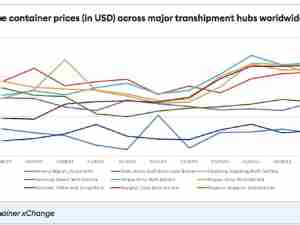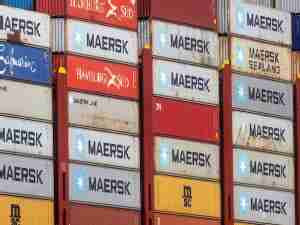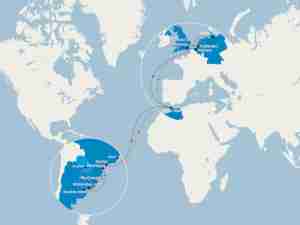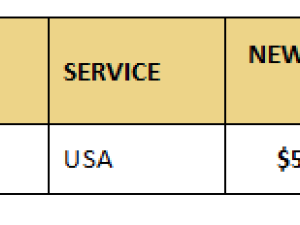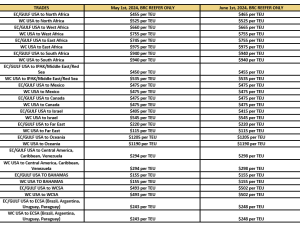The two ships were christened by family friends of Rickmers Group Chairman Bertram Rickmers. Mrs Antoinette Zornig named TAURO RICKMERS while Mrs Elke Scharfe named LIBRA RICKMERS.
A Swiss citizen and a mother of seven children, Mrs Zornig is married to Professor Dr Carsten Zornig of the Israelite Hospital in Hamburg and is a supporter of both the board of members of the French School in Hamburg and the committee of Human Rights Watch. Mrs Scharfe was born in Hamburg and lives now with her husband Rolf Scharfe in Hamburg Blankenese. Here she can view passing traffic on the River Elbe, which will shortly include the ships that she and Mrs Zornig christened.
Mrs Scharfe established her own non-profit association Hamburger Kinderw'nsche in 2005. This organisation cares for seriously ill children during their clinical treatment at the University Medical Center Hamburg-Eppendorf.
Following the ceremony, TAURO RICKMERS was renamed MAERSK EVORA and sailed to Busan to commence loading for Europe on Maersk's AE2 service. At the end of July, Hyundai is due to deliver LIBRA RICKMERS, which under the name MAERSK ESSEX should start loading in Busan on 30 July, also for Europe on the AE2 service.
The port rotation for the AE2 service is: Busan ' Hakata ' Dalian ' Xingang ' Qingdao ' Ningbo ' Shanghai 'Yantian ' Tanjung Pelepas - Suez Canal Container Terminal ' Valencia - Rotterdam ' Bremerhaven ' Hamburg - Antwerp ' Felixstowe ' Singapore ' Busan.
With an overall length of 366m and a beam of 48m, Rickmers' eight 13,100TEU ships are not quite the largest containerships being built today but have the flexibility of being able to transit the Panama Canal once the new locks are completed.
Containers are carried 17-wide below deck and 19-wide on the hatchcovers. The maximum capacity of each ship is 7,074TEU on deck and 6,018TEU below deck, making 13,100TEU in total.' Based on a homogeneous container weight of 14 tonnes per TEU, the maximum capacity is approximately 9,080TEU. Reefer plugs are available for 800 x 40ft containers.
Each ship is powered by a single Hyundai-W'rtsil' 12RT-flex96C main engine weighing over 2,000 tonnes and developing 68,640 kW (MCR) at 102rpm and 61,776kW (NCR) at 98.5rpm. Five 2,700kw diesel generators are installed.
Although designed for a service speed of 24.33 knots, the flex-engines still achieve 21.5 knots at 60% of the engine's normal output but can also slow steam as' required' under charterers' current service patterns, generating substantial fuel savings. By having this substantial speed reserve, the ships can increase speed when necessary to maintain schedule integrity, an important factor in a service industry.
